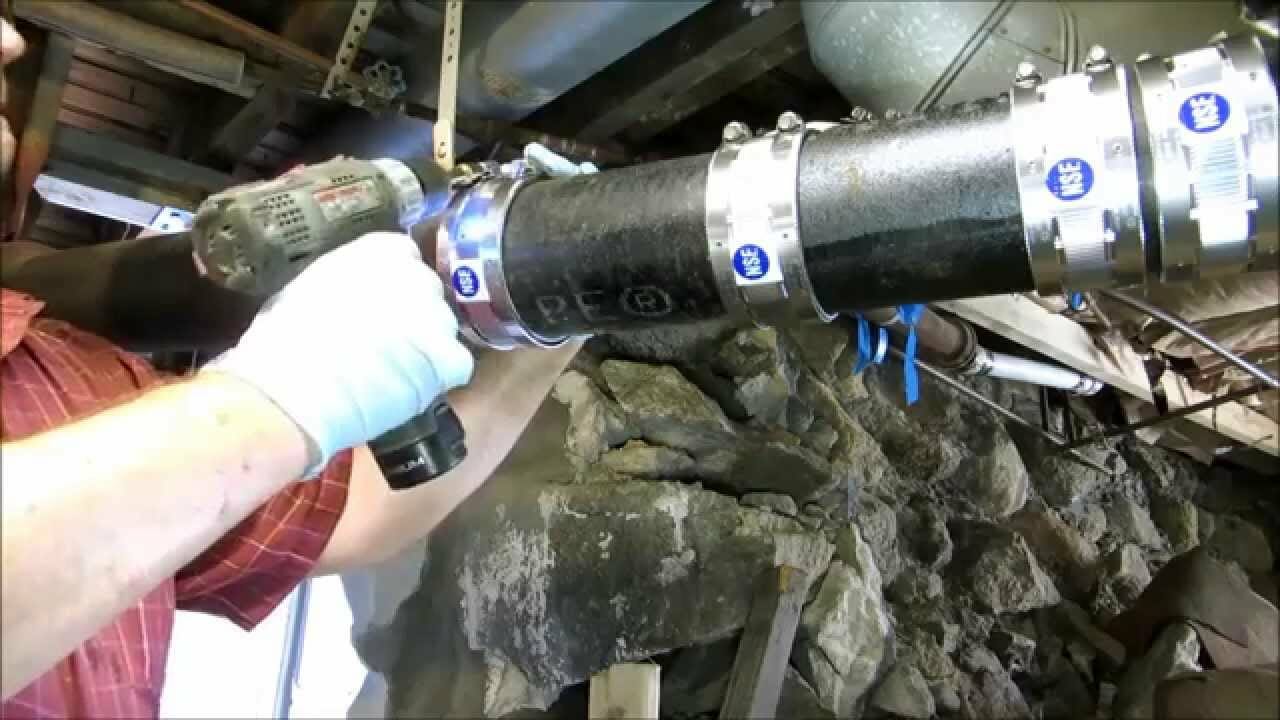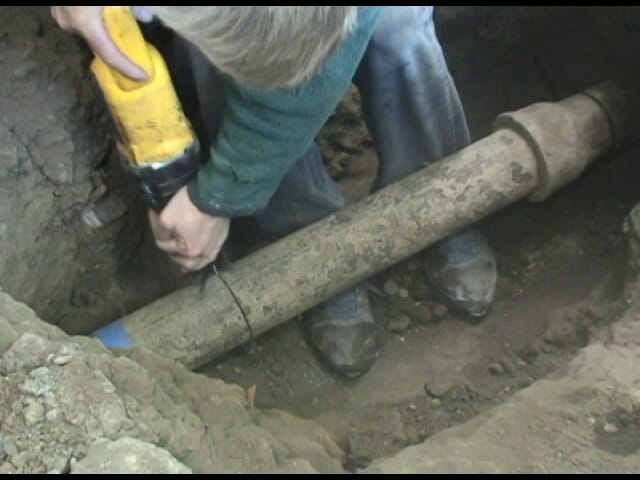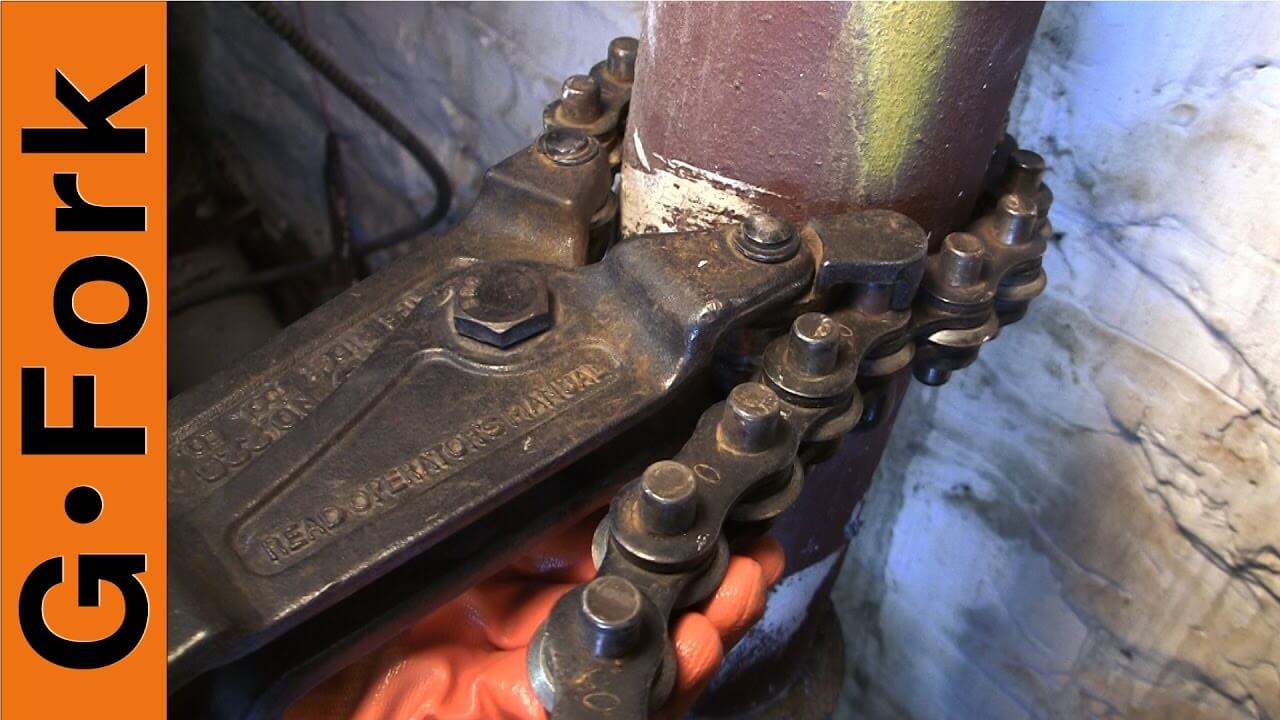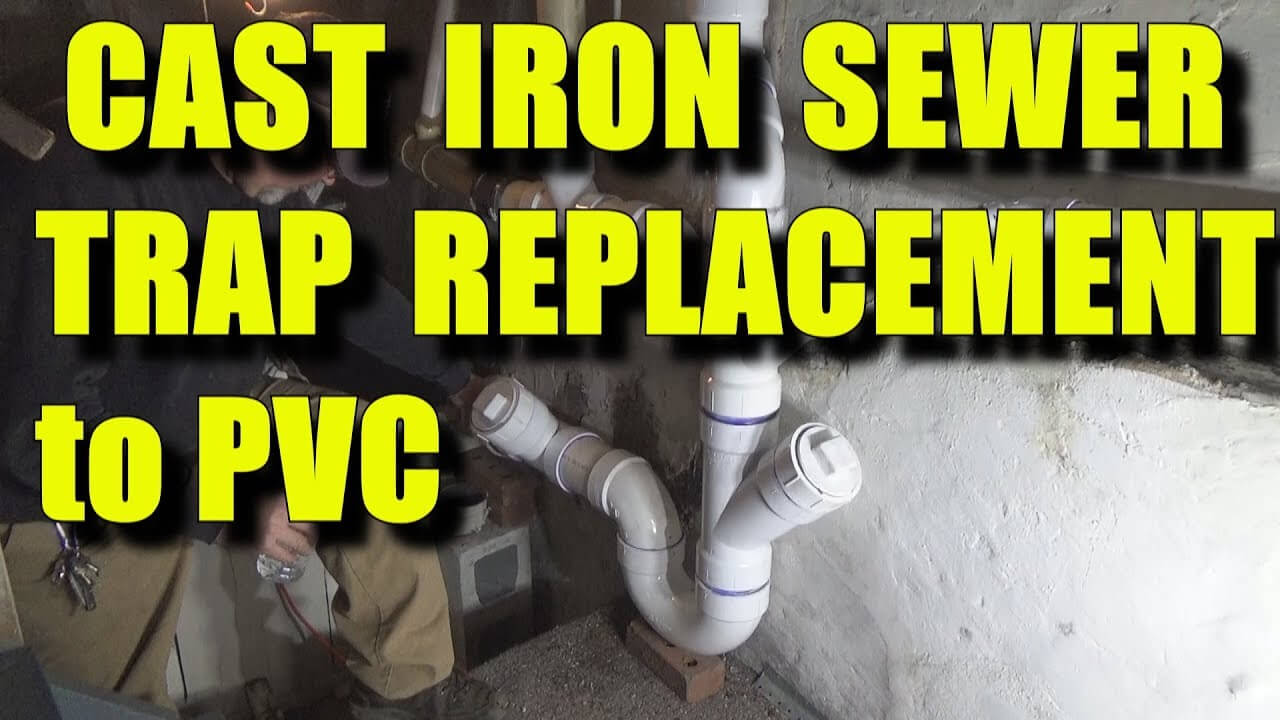How to Cut Cast Iron Pipe With an Angle Grinder
If you are dealing with problematic cast iron pipework that has to be replaced due to a leak, fear not, rectifying such a conundrum is humanly possible, even if you’re not a qualified plumber.
Removing a section of cast iron pipe can be tricky, and especially so if you’re working in a confined space.
But, if you’ve got the right tools for the task, the process is relatively simple. The one tool you can use and likely have on hand is an angle grinder.
While you could use a reciprocating saw or even a hacksaw to vigorously slice your way through cast iron, utilizing an angle grinder to swiftly cut segments of cast iron pipe, is a viable option too.
So without further ado, let’s go over how this is effectively done.
Can I Use a Grinder to Cut Cast Iron Pipe?
With the right cutting wheel equipped to your sturdy angle grinder, you can take to just about anything if your grinder is of the heavy-duty variety.
Angle grinders are versatile enough to be used to cut tile for a bathroom upgrade or sections of angle iron for building a basic shed.
Although, if the angle grinder you’re considering using to cut cast iron pipe was the same price as the socks you’re now wearing, you might want to consider upgrading, as that Fisher-Price tool just won’t cut the mustard.
But, if you did manage to invest in something that can withstand the rigors of cutting through tough materials like cast iron, you sure as hell can.
As long as you’ve got yourself a decent cutoff wheel, or better yet, a diamond wheel fitted to your angle grinder, you’re good to go.
Cutting cast iron pipe with an angle grinder is super easy. You really just need to mark the pipework with some chalk or even a crayon and fit yourself with the appropriate PPE gear.
Here’s a list of PPE items that you really should use when cutting cast iron pipe with an angle grinder:

What is the Best Way to Cut Cast Iron Pipe?
The best method for successfully cutting cast iron pipe is to do so on a sturdy workbench with the piece of pipework firmly seated in a bench vice. But, if that’s not possible because you live in a wonderful place called reality, you’ll have to merely adapt to the environment you’re operating in.
The majority of the time, you’ll find the problematic section of cast iron pipe that requires your most urgent attention, happens to be located under your house or in a pit you’ve begrudgingly dug up.
If you’re lucky enough to be staring at a section of cast iron pipe that simply protrudes from open ceiling space or is erected vertically from the ground, simply have it.
Proper Way to Cut Cast Iron Pipe
While you can make use of that brute for an angle grinder to effectively chop your way through that prehistoric piece of cast iron pipework, there is another alternative worth mentioning.
The other feasible power tool that will happily ravage any would-be section of cast iron pipe is a reciprocating saw or also known as a Sawzall.
Now while both will undoubtedly cut through cast iron pipe, one of these ferocious power tools will do the job quicker, and that’s the reciprocating saw.
As long as you’ve got a fine carbide-tipped reciprocating saw blade or a high-quality diamond blade equipped to your saw, you should have no problems cutting through cast iron up to 9-inches.
The only other safe substitute for successfully cutting cast iron pipe if you do not own a reciprocating saw or a snap cutter is to resort to using your old faithful angle grinder.
While cutting cast iron using an angle grinder as opposed to a reciprocating saw might be considered slightly more time-consuming, it is still a fantastic no-nonsense option that works like a charm.
Speaking of safety, you should never cut unsupported cast iron pipework. If you’re working on a section of cast iron pipe that is positioned vertically, you should use a basic riser clamp to prevent the falling once cut.
Note, cast iron is extremely heavy and you don’t want a section of pipe swinging around out of control after chopping it.
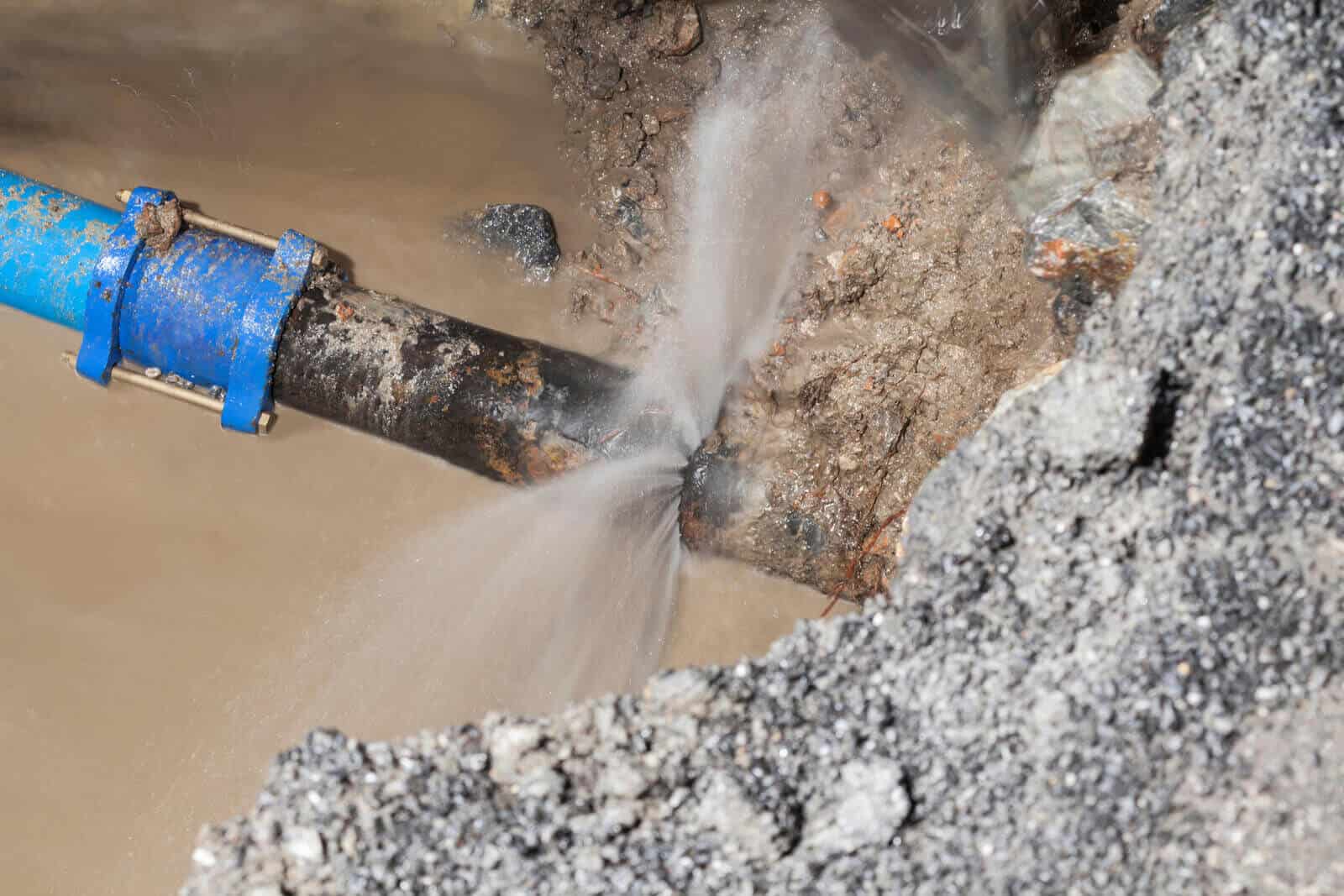
How Do You Cut a Pipe With an Angle Grinder?
Cutting cast iron using an angle grinder is a quick and painless operation that should only take a few minutes. Here’s the exact method for cutting through virtually any section of cast iron pipework.
- Fit your metal cutoff disc or diamond wheel to your angle grinder using the ratchet tool to tighten it.
- Clearly mark the section of the cast iron pipework where you’ll be cutting with a piece of white or yellow chalk.
- Then make use of all the recommended PPE gear we mentioned previously to protect your eyes, ears, and hands.
- Place the section of cast iron pipework on a workbench utilizing a bench vice if possible to safely secure it in position.
- If you’re operating on-site and the pipe is positioned vertically, use riser clamps where you can at ground level and or above any supporting points.
- Fire up the grinder and commence your cut by working your way around the pipe making a groove to weaken the pipework.
- Continue around the entire perimeter section of the pipework allowing the grinding wheel to penetrate through a single point of the pipe.
- Once through, carry on cutting your way around the pipe as your typical 4-1/2 inch grinder won’t be able to chop through larger cast iron sections of pipework in one clean sweep.
- As cast iron is very heavy, you can always use a regular cold chisel to finish the job by driving the chisel through the last remaining segment to snap the pipe. This is ideal if you’re working solo and are unable to control the pipe once it’s been cut completely.
To get a better idea of what you’ll be in for, here’s a video breaking down the exact method for cutting cast iron pipework with an angle grinder.
How Do You Cut Cast Iron Pipe in a Tight Space?
Alright, you have a couple of options when venturing into a confined tight space to cut cast iron, and utilizing a raging angle grinder that produces an abundance of sparks isn’t what I recommend.
As previously discussed, you can attach a carbide-tipped or diamond blade to a reciprocating saw to effectively make this cut. Using such a tool is hugely beneficial when operating in confined spaces as you’ll be able to make the necessary cuts without any hazardous sparks.
Now if you don’t own a reciprocating saw and you’re a DIYer operating on a budget where purchasing one is not practical, utilizing a soil pipe cutter (also known as a snap cutter) is the way to go.
Now I know what you’re thinking, a snap cutter is expensive, and that’s a boatload of money for a tool I’ll likely use once or twice. Well, you can always get your hands on a snap cutter for relatively cheap by just renting one for the day.
Get in touch with your local tool shop or even try Home Depot as I know you can hire a decent snap cutter from them for about $30 for the day.

Anyways, assuming that you’ve conducted the correct preparations and taken the necessary safety precautions, let’s break down these two techniques utilizing both tools.
Cutting a Cast Iron Pipe With a Reciprocating Saw
First, we’ll cover cutting cast iron pipework in a tight space using the reciprocating saw. Now whether you go with a diamond blade or a carbide-tipped blade is entirely up to you, but I’d recommend the latter.
- Start by spraying the cast iron pipework with a bit of WD-40 as this will lubricate the blade and help prevent blade wear.
- Securely attach your heavy-duty diamond blade or carbide-tipped blade to your reciprocating saw.
- Simply mark the section of pipe where you’ll be cutting with a piece of chalk in a uniform fashion in an attempt to make a precise, clean cut.
- Commence cutting the pipe by applying a moderate amount of pressure while maintaining a slow and steady pace.
- Complete the cut by continuing this controlled cutting motion until you’ve cut entirely through the pipe with a single clean slice. You should now be looking at clean and even cut which will allow you to seat a new coupling neatly
Cutting a Cast Iron Pipe With a Soil Pipe Cutter
Next is every plumber’s favorite method. Cutting cast iron pipework with a snap cutter. The most common snap cutter you’ll likely hire is a ratchet soil pipe cutter. That’s what we’ll be covering here today.
- Create a clear path of access to the pipe you are attempting to cut and be sure to remove any lingering cables out of harm’s way.
- Take your ratchet soil pipe cutter and place the jaws of the pipe cutter square to and under or around the pipe making sure both hooks are on the pipe with the open side up.
- Pull the open end of the chain firmly around the pipe and insert the closest chain pin into the hook which will lock it into position to begin your cut.
- Make sure that the jaws of the pipe cutter are square to the pipe and that the chain is located in a position with the cutting line that you’ve marked.
- Now that the chain is seated securely on the pipe, you can start rotating the ratchet in a clockwise motion to tighten the jaws of the pipe cutter.
- As you’re forcibly rotating the ratchet, you’ll reach a point where the pressure applied to the pipe via the jaws snaps the pipe with a clean cut.
And that’s it. You’ve now successfully made a clean and precise cut with either a reciprocating saw ratchet soil pipe cutter.
Pro-tip, if you’re operating in a riser, you’ll likely need supporting riser clamps and will also have to cut the pipe in sections to safely remove it.
Can You Replace Cast Iron Pipe With PVC?
Short answer, absolutely! And you should definitely consider it if you’re dealing with a burst cast iron pipe.
Cast iron pipework was once heavily utilized for mains drainage and sewer pipe applications and is typically found in older residential and commercial-type properties.
While cast iron pipework was once considered an incredibly robust alternative for such applications as it was expected to last up to 75 years, it ceased being used for residential builds in 1975. Why is that you wonder?
Because cast iron develops rust, and once it does, the potential of springing a disastrous leak increases drastically.
That’s why today both ABS and or PVC are typically used instead of cast iron, plus installing the latter is a hell of a lot easier due to the massive reduction in weight.
How to Replace Cast Iron Pipe With PVC Pipe?
Alright, so you’ve cut the dodgy segment of cast iron pipe in question and now need to replace it with some lightweight and highly durable PVC.
This involves a bit of prep and might require you to get your hands dirty, which could be taken literally, especially if you’re repairing a leaking cast iron sewer pipe.
Whether you’re attempting to splice in a section of PVC pipe to overhaul a length of rusted cast iron pipe or you’re trying to merely tap into and incorporate a new connection, the same basic practices are required.
The first mandatory step is to remove any would-be lead from the pipework so you can effectively install a service bushing. This type of service bushing that is inserted into the freshly cut cast iron pipe will allow you to transition directly to PVC without any concern for potential future leaks.
Once you’ve measured and cut the pieces of PVC pipe you’ll be using to update the cast iron pipework with, you should ideally conduct a dry run by connecting every joint without applying any primer or glue. The reason for this is that once you’ve applied the glue and the PVC pipe is in place, there’s no turning back.
Now if you’re using rubber couplings with stainless steel clamps that can be fastened or unfastened, playing around with primers and or glue will be none of your concern. Exactly what fittings you’ll be using will solely depend on the job you’re carrying out.
But to get a better understanding of how the pros operate and observe just how one would replace a leaking sewer pipe, here’s a fantastic breakdown of the task at hand.
In Conclusion
So you’re now a bona fide expert when it comes to cutting cast iron pipe and can confidently accomplish this feat with absolute ease.
Just be sure to get your man-hands on a quality cutting wheel. If you’re planning on using an angle grinder to cut cast iron pipe or even regular metal with an angle grinder, always make sure to use the correct cutting wheels.
While we covered a few different alternatives for cutting cast iron pipework, you really can’t go too wrong with either option.
Whether you utilize an angle grinder, reciprocating saw, or a ratchet soil pipe cutter (we recommend you hire), you’ll be able to cut and update that portion of troublesome cast iron pipe like a professional plumber.


